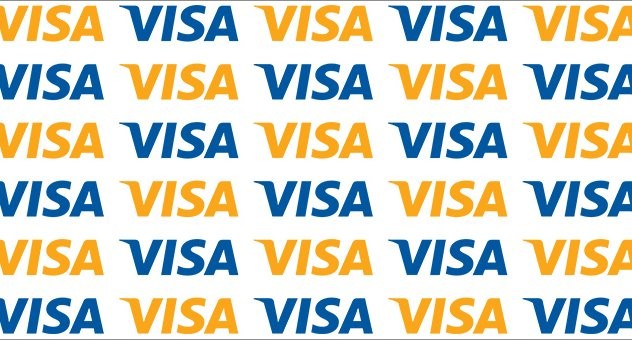If you’re a business trying to run a card-not-present transaction on your customer’s card, Visa and Mastercard have specific guidelines about how you should proceed if the initial transaction is declined:
A card should always be run for the full amount owed, splitting a charge into lesser amounts on the same card simply increases the risk that you as a merchant will not receive your full payment in a timely manner.
If a card declines the card holder should be notified immediately and asked to contact their issuing bank to resolve any issues that may be triggering the decline.
A card should only be attempted a second time if the card holder comes back and states that all issues have been resolved with their credit card issuer.
A card should not be attempted again if it declines more than twice in a day, you should either request a different form of payment from the customer or wait 24 hours.
If you choose to wait 24 hours and the card declines a third time a new form of payment should be requested.
Following these steps will reduce the risk of receiving a false authorization which can be triggered by multiple attempts to authorize a card in a short period of time and give the merchant greater security in their payment processing.
BEGIN TRANSCRIPT:
Ladies and gentlemen, boys and girls, my name is Jaron Rice, and I am the founder and CEO of Magothy Payments, Maryland’s highest-rated merchant services provider.
Today I want to go over VISA and Mastercard regulations as it relates to declined transactions. We at Magothy Payments work a lot with card-not-present merchants, so businesses who are not physically present in front of their client when their clients are paying with a credit card. These might be home improvement companies, home services companies, people who are taking payments over the phone, eCommerce transactions, gateway transactions, payments through invoices. Things like that when the card isn’t physically there.
Because the card isn’t physically there, inherently there is more risk to that transaction and that risk for fraudulent transaction increases if the card is declined and the merchant continues to run the card. An example would be let’s just say a plumber finished a job, got your payment information, went back to the office and went to run the transaction and it was $500, and that $500 transaction was declined. He’s already done the work. You owe him the money. He’s trying to run that transaction and it gets declined. Oftentimes, he will attempt to run the transaction again and then again, and then again.
There are times when businesses in that situation, if they run it for the total amount that is due and it is declined, they will decrease the amount. Let’s say he runs it for $500. It doesn’t work. He tries it again. It doesn’t work. He runs it for $400 it doesn’t work. He tries $350 and then it finally goes through. From the payment processor side of that, the acquiring bank and the issuing bank will look at that as highly suspect. It looks fraudulent. It looks like you found a credit card on the ground and you’re trying to run it for as much as you can possibly get off of it.
VISA and Mastercard have specific regulations and protocols that you should follow to avoid having funding delays or delays in getting your money after the fact. The first thing it says is, “A card should always be run for the full amount that is owed. Splitting a charge into lesser amounts on the same card simply increases the risk that you as a merchant will not receive your full payment in a timely manner.” When a merchant services account is initially approved, most of the time it will have a high-ticket limit.
If your account says that you can run a transaction as high as $5,000, if you get an $8,000 transaction, running it $4,000 twice, you’re not fooling anybody. Sometimes merchants will break it up into smaller transactions because they don’t want to exceed that limit. Their software is going to recognize this is the same card number being run in quick succession and you’re more likely to get the transaction flagged than if you were to run it as one transaction and exceed the limit.
It says, “If the card declines, the cardholder should be notified immediately and asked to contact their issuing bank to resolve any issues that may be triggering the decline.” This is where it’s really important to look at the processor response. If you’re using a virtual terminal and you’re actually the one keying it in because they’ve provided the card number on a payment form or you’re getting it over the phone, there’s usually a processor response that will say, “declined” or it’ll say, “over the card limit.” And this is often the case if you’re running a debit card and it’s a transaction and it sees $1,500 because most debit cards will have a daily limit on them. You might have $20,000 in the bank account that debit card is attached to but if you try to run it for a single transaction over $1,500, it would decline. You have to call the bank and ask them to temporarily remove that hold. That’s a fraud deterrent mechanism that the bank has.
They’re saying, “If a transaction is declined, verify with the cardholder, ‘Did I get the card number right? Is this the right information? You need to call your bank because it’s getting declined.’” A card should only be attempted a second time if the cardholder comes back and states that all the issues have been resolved with their card issuer.
If you verify with the cardholder this is the correct information, you can try it again. But it goes on to say, “A card should not be attempted again if it declines more than twice in the same day. You should either request a different form of payment from the customer or wait 24 hours before attempting it again.” That is really, really important because we’ve seen scenarios where a merchant will attempt the same card, two, three, four, five, six times until it goes through. If it does eventually go through, more than likely those funds are going to be held because the transaction itself seems suspicious and you’re going to have to turn in supporting documentation like a signed agreement, a payment authorization form and things like that.
If you choose to wait 24 hours and the card declines a third time, a new form of payment should be requested. And then it goes on to say, “Following these steps will reduce the risk of receiving a false authorization which can be triggered by multiple attempts to authorize a card in a short period of time and give the merchant greater security in their payment processing.” According to VISA and Mastercard, and maybe this is if you’re trying to run a transaction fraudulently, apparently repeating it over and over and over again can potentially overwhelm the issuing bank’s approval process and get a false authorization where if you run it enough times it’ll eventually go through but it could be potentially a fraudulent transaction.
Just wanted to provide you with a little bit of information regarding those declines. If this is something that you’ve experienced as a merchant, this is why. If your decline percentage gets too high, your account as a whole could be suspended and reviewed for fraudulent activity because again from the acquiring bank’s standpoint, if 15% of the transactions that you’re running are declines, that looks suspicious. The higher that percentage goes, the worse it looks.
If you want to have smooth sailing with your merchant account, you can certainly abide by those regulations and you shouldn’t have problems going forward.
I hope that was some good information for you. If you have any questions, you can certainly reach out to us at info@magothy.biz or magothy.biz obviously is the website. Please subscribe and like the video if you like the content, and hopefully we’ll get some more out to you pretty soon. Have a good one.






